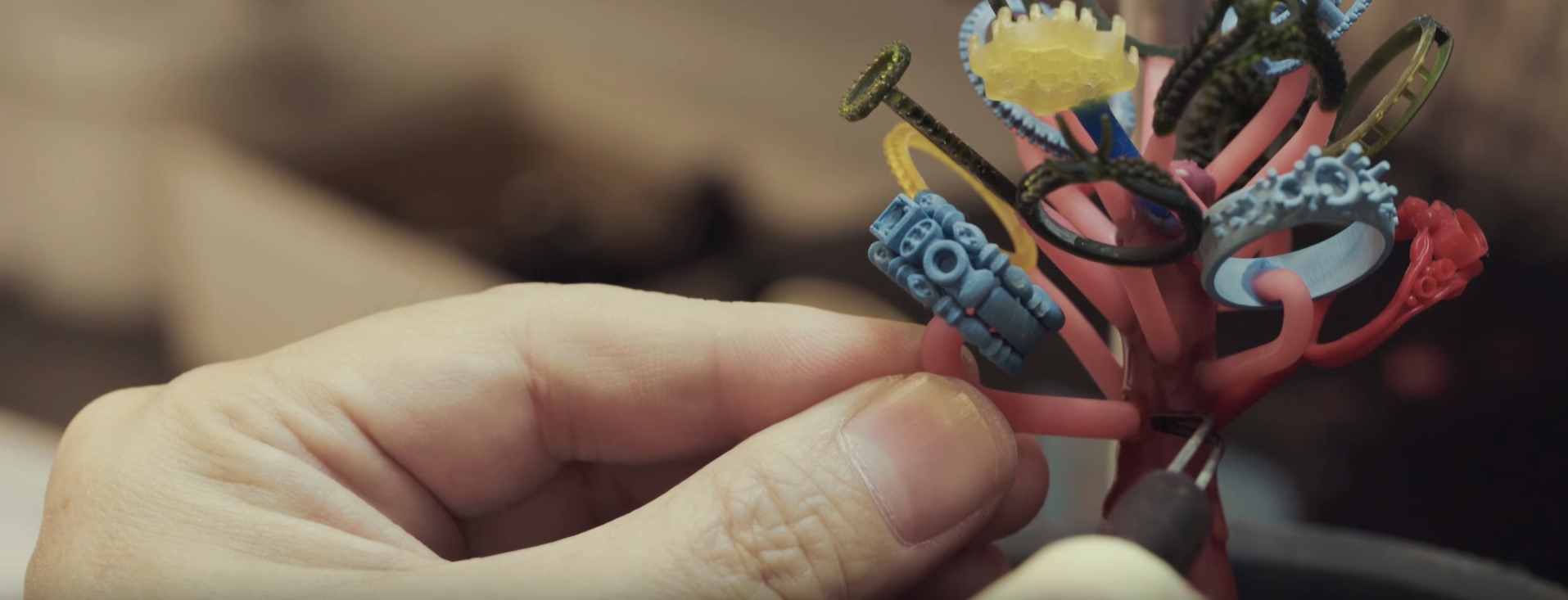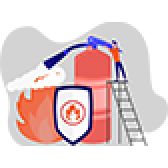Better management with a jewelry casting specific software? Yes, it is possible.
In the last few decades, the competition between jewelry casting companies has intensified. The more inventive ones have purchased the latest technologies, the best machinery, and the latest 3D printers. But are these the only things that differentiate a reputable casting company from the others?
Optimizing processes and organizing order management are two elements that can secure a competitive advantage in this market. By automating processes and different repetitive tasks, companies can serve their clients faster and more reliably.
Learn even more at gopiro.com/jewelry-casting-management
10 processes that can be automated at a jewelry casting and prototyping company (infographic)
When it comes to business management, there is a wide range of methods that jewelry casting companies currently use. The rule of thumb is that the more digitalized they are, the more centralized and automated their management is. As a starting point, we can define 4 different methods:
- manual, paper-based management (no automation)
- partial digital management, using Excel spreadsheets (no automation)
- using non-casting specific management software (partial automation)
- high-level management automation with casting-specific software, like PIRO (full automation)
High-level automation is where a company can gain a significant competitive advantage, but this can be achieved only with an industry-specific management solution. If you choose a casting-specific software, you not only fully automate your business management, but you can expect shorter implementation time and a more efficient user training curve.
Typically, jewelry service companies offer various services from CAD design to 3D printing, casting, molding, polishing, stone setting, engraving, and even finishing. We all know that these services are very unique to this industry, therefore, implementing a generic ERP or a management platform that is non-jewelry specific comes with many obstacles.
In this niche, here is our solution, PIRO. It covers all the main operating areas of a jewelry service company from sales to manufacturing and order fulfillment. Below you can see the 10 main processes that can be automated with PIRO.
Learn even more at gopiro.com/jewelry-casting-management
Let's talk about this further. Your company's current level of digitalization doesn't really matter, because automation can and should be implemented. This is also called leapfrogging: you have the chance to skip stages and advance from manual management tracking to full automation.
Let's see how can full automation, increased customer satisfaction, and overall business growth be achieved:
1. Accepting orders automatically
PIRO users are typically accepting orders through a web-based Customer Portal. This portal allows their clients to send in orders at any time, not only during business hours. As they can provide all the details through the portal (upload .stl files, select workflows, select attributes, and metal types, add instructions etc.), the whole process becomes automated and free of human interaction. Back and forth emailing and spending hours on the phone is completely eliminated, and that’s why customers love this fast and convenient way of sending orders or quotation requests. PIRO is connected to this web portal in real-time so no double data entry is necessary. Big wow!
2. Quick price quotation. Pricing.
Nothing to do here, please move on. For real. With PIRO you can automate this process as it can calculate the price of a quotation or a job order using specific pricing formulas. This includes metal market price update, markups or discounts, service fees or even volumetric-based price quotation for .stl-based orders. Would you like to modify the price before syncing it back to the Customer Portal? You can do that too. As soon as the price estimation is synced back from PIRO to the Customer Portal, approval or rejecting options become active for your clients. The effort on their side is minimal, the whole process is fast and convenient for both parties.
3. Automated design approval
If your services include CAD design too and you create a design in-house or modify a submitted file, the design approval step cannot be skipped. Obviously this is a small, but nevertheless important step. The traditional way of doing it is to send the file by email and wait for a response. The PIRO-way of doing it is one click: you don't have to leave the software, PIRO sends out the email with the attachments and the client will be able to approve it through the Customer Portal.
4. Automated tracking of orders (and users)
How do you keep track of what happens in different production phases? Well, it is not indifferent at all what the employees have to do during production. Most production steps require some sort of input, and ideally, this information is stored centrally and can be recalled any time. When someone is using Excel spreadsheets... there are few options for recording such information. PIRO can not only store information, but it can also pop it up for the user as a requirement before moving the job order in or out a specific service. A few examples: attach the design file after CAD is done, enter item weight before or after polishing, issue and return metals during the casting process, generate invoice before, etc). We can also assign users to job orders and measure their performance (speed and quality) along with the time spent on each order.
Tracking deadlines is a misery for every casting company. A reputable company does not only provide quality service but is never late with an order (at least not through his own fault). PIRO can estimate the finish date right at the creation of an order and can warn the user if some tasks cannot meet the deadline.
5. Metal loss tracking
Yet another corner topic for casting companies. Metal losses can originate from natural production processes, human mistakes, or sometimes from theft. PIRO minimizes the chance of human errors or theft and precisely tracks all, natural losses. Managers will know exactly who worked with metals, when and how much was the loss during production. The system helps to issue the right amount of metal that’s needed to complete a process (e.g. casting), and tracks how much should be re-entered to inventory - now in a different format (scrap, sprue, dust, finished item). During casting, losses cannot exceed a certain value. If it happens, the user must provide a valid reason.
6. Production-driven inventory tracking
If you are a casting company, your inventory changes constantly. Metals are pulled from inventory, used, mixed, and then re-used. Meanwhile, you are trying to keep the inventory balanced, to always have enough raw materials when a new order comes in. This is just like juggling where it’s best not to make mistakes. Inventory tracking shouldn’t be done manually. Instead, it should be automated.
PIRO can track inventory movements in real-time without manual intervention. It can remove metals when you process an order and can warn you if inventory levels are low. Let PIRO create a purchase order automatically when you need to re-order something. Moreover, it has a feature that can create purchase orders based on actual job orders in production. PIRO’s inventory automation is pretty awesome and it can save you a lot of time and cost.
7. Automated job status updates to your clients
Do clients often bug you regarding their order’s status? Well, you must keep them informed as it is part of the service. This takes up a lot of time and effort for sure, and without a proper tracking system, you might not have information at hand about the actual status of an order. It would be great to automate it, right? The PIRO Customer Portal does this task smoothly. Since jobs and their workflows are precisely tracked in PIRO, syncing this information to the Customer Portal is a breeze.
Clients can log in and see the job completion percentage, shipping, and other information in real-time. This method works very well at PIRO-managed casting companies. Their clients love this tool as the whole process is transparent, no calling or emailing is necessary. This is true customer service.
8. Better quality checking process
Although people tend to look at casting companies as production companies, in fact, their "product" is a service. What casting companies work on is always unique. No two jobs are the same since it is not mass production. Given these facts, it is not enough to do random quality checks: each order should pass QC (even multiple times during the process) before shipping.
You might be asking: how can a software help in this matter? Truth is it can’t assist you directly, but it can provide an insight into the bottlenecks your staff is facing. Just check the job workflow history. There you will see how many times a job got rejected and for what reason. Recurring quality problems may arise when some machinery is not working properly or people's skills are not up to the requirements. Once you have the source of the problem, you can take action: you may need to upgrade equipment, re-shape processes or you may need to train your staff.
Rejected jobs are doubling your loss: on the one hand, you may miss the order deadline, thus your service quality deteriorates, and on the other hand, the cost of re-doing some processes is on you, i.e. in most cases, you can't charge the customer for it.
9. Automated invoicing and shipping
When you need to do something 10 or 100 times a day - that’s what we call a repetitive task. Invoicing and shipping is definitely a repetitive task for casting companies. The invoicing process is quite standard: check who the client is, what markups, service charges or shipping charges should be added to the invoice, what items must be paid, etc. Collecting all this information manually is quite a big work.
What if you could replace it with a few clicks? The time saved would be enormous.
By the end of the production process, all the above-mentioned information is saved in PIRO's centralized database. If you need to create an invoice, the system simply pulls the information and generates it. Shipping? Our FedEx and USPS integration makes it possible to calculate the shipping cost, print shipping labels, and sync the tracking number back to the Customer Portal.
10. Collecting due payments - online
It's quite a bad feeling looking at the clients' negative invoice balance, right? It's common to give Net 15 – Net 30 payment terms for returning clients that we trust. Some clients may trust you as well and are willing to provide their credit card information so you can charge them quickly. Or if your business is growing and there are new clients coming, you might want to charge them immediately.
These are all different scenarios for payment collection and we have a solution to all of them. You can either send your clients a secure link where they can enter their credit card information and pay, or you can instruct them to log in to the Customer Portal where all the information is accessible, and invoices can be settled online at any point in time.
Learn even more at gopiro.com/jewelry-casting-management
Summary
We have more than ten years of experience in this field, and our software is used by many jewelry casting companies, especially in the USA and Australia. Many of them reported a significant growth in order volume, their employees are making fewer mistakes and their overall customer service has improved. And this is the key: only satisfied clients become returning customers.
Implementing the right management software can lead your business towards a positive spiral. Don't hesitate to talk to one of our representatives, if you are struggling to move your casting company to the next level.








